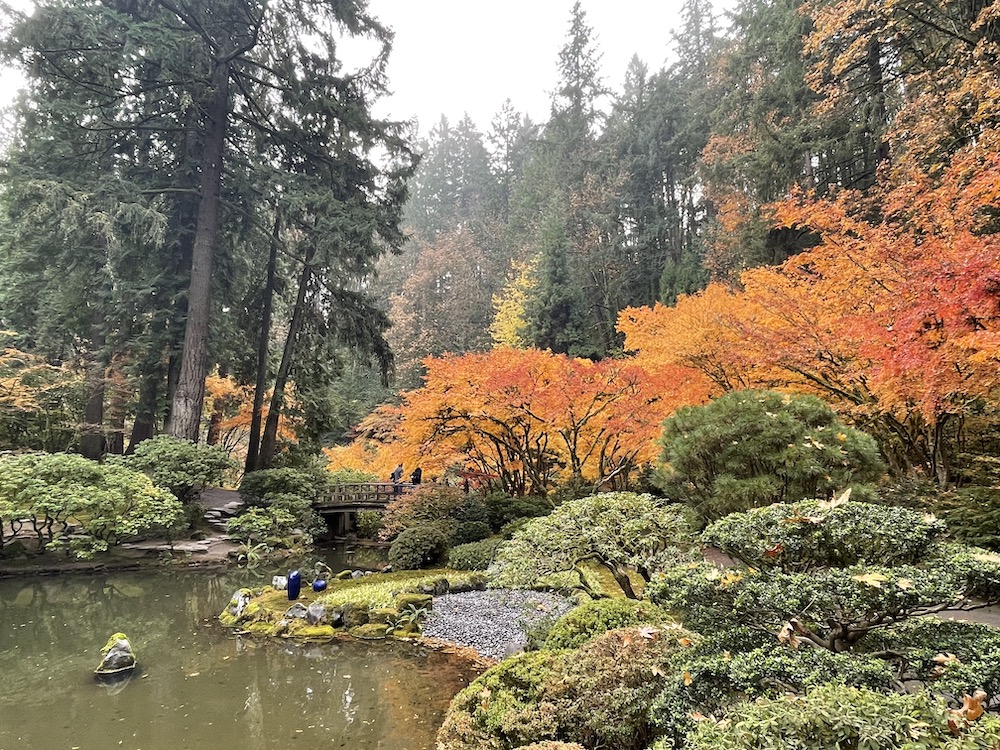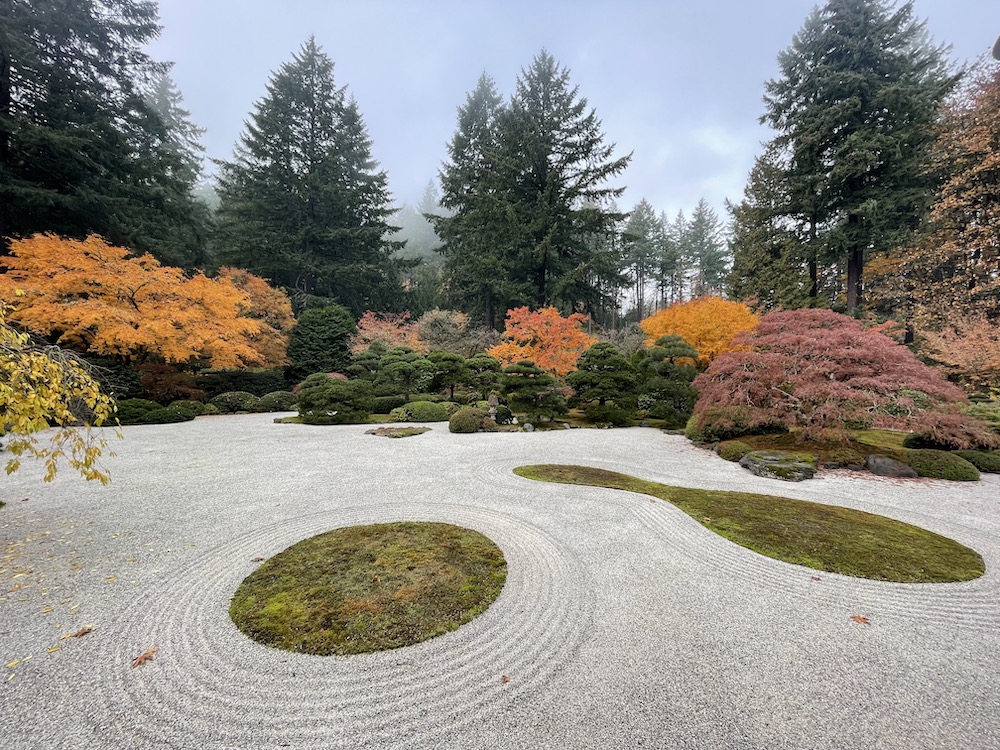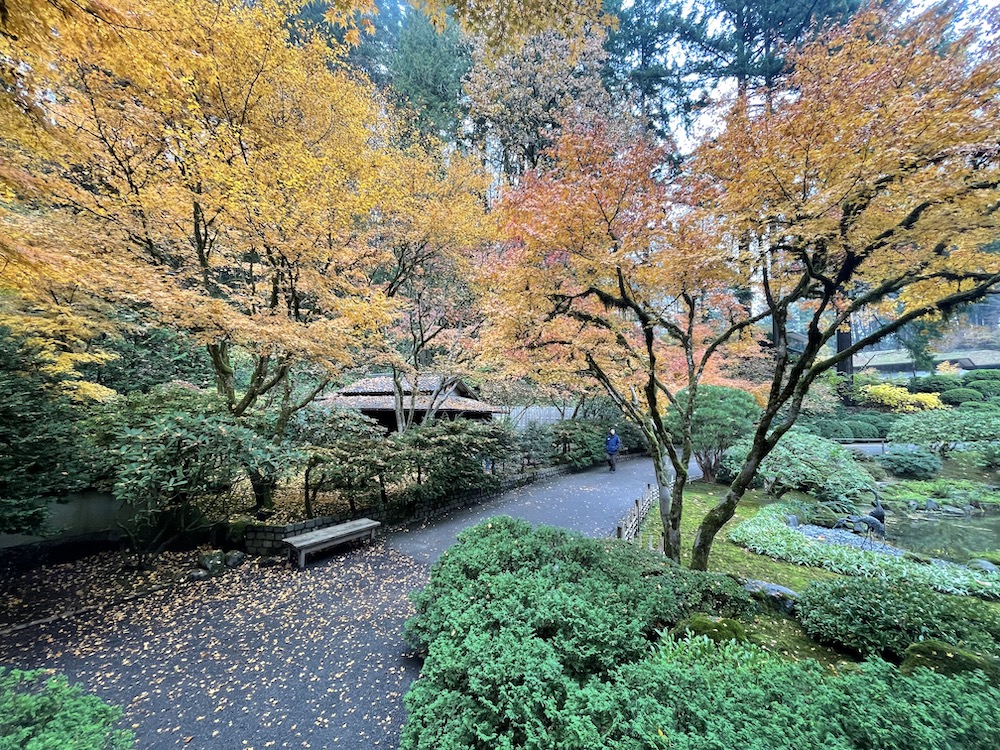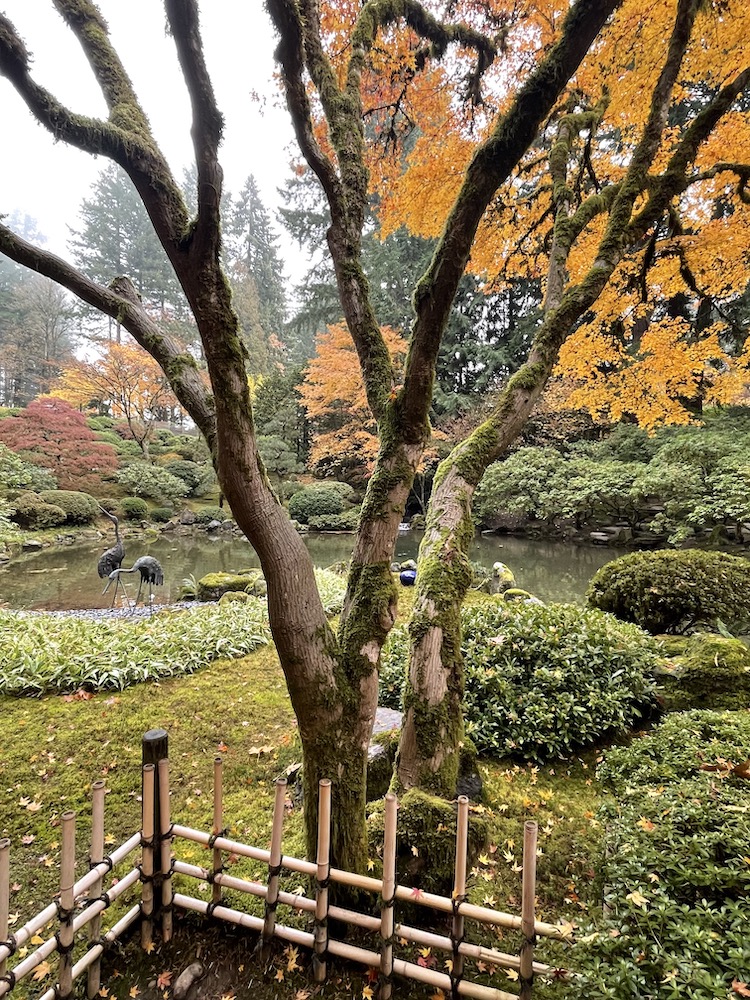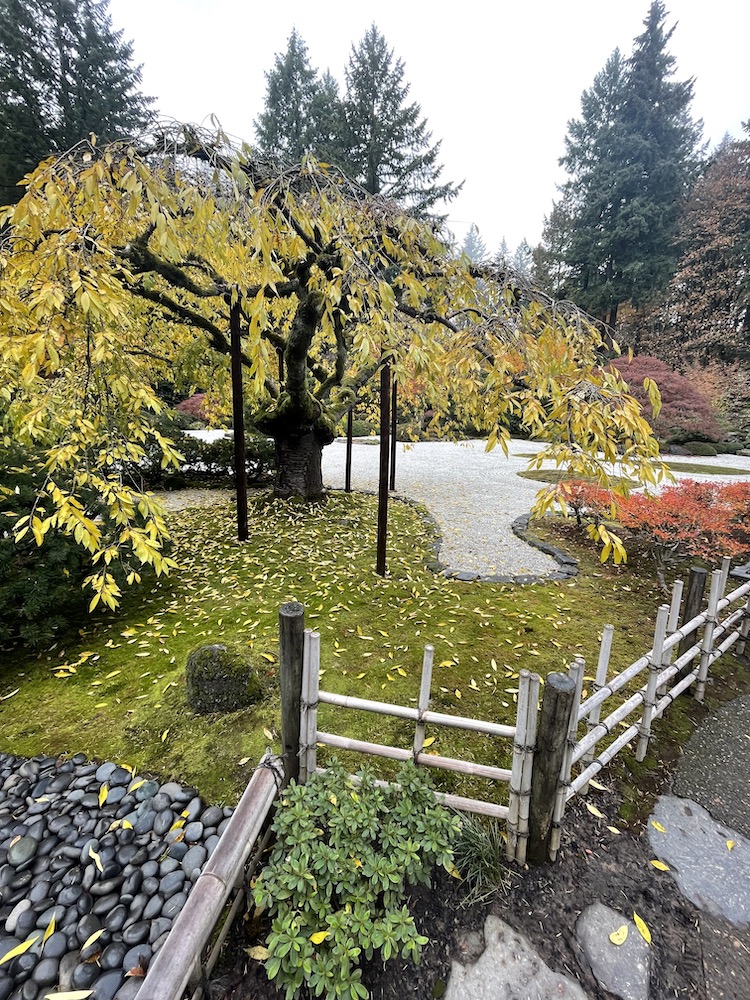Ever wondered what it was like way up north…in the northern half of Alaska—IN THE ARCTIC CIRCLE? What does it look like? What kinds of trees and plants grow there? Is it flat or mountainous? Is there snow and ice? What does tundra and permafrost look like? How big are the trees, if there are even any? Watch this video to discover answers to these questions and learn more with Adventures in Trees with Nathan the Treevangelist.
Monthly Archives: December 2022
Touring the Lan Su Chinese Garden in Portland, Oregon
The Lan Su Chinese Garden in downtown Portland, Oregon is one of only nine Chinese gardens in America, and one of only two of its kind. It’s a whole other world in a one square city block garden oasis in the midst of a concrete and steel urban jungle. This garden will transform you and carry you to some place else—somewhere better. I was totally shocked and surprised when I first visited it. I never knew such a treasure existed in this somewhat infamous city.
Tree Planting Site Analysis, Planting and Monitoring Specifications
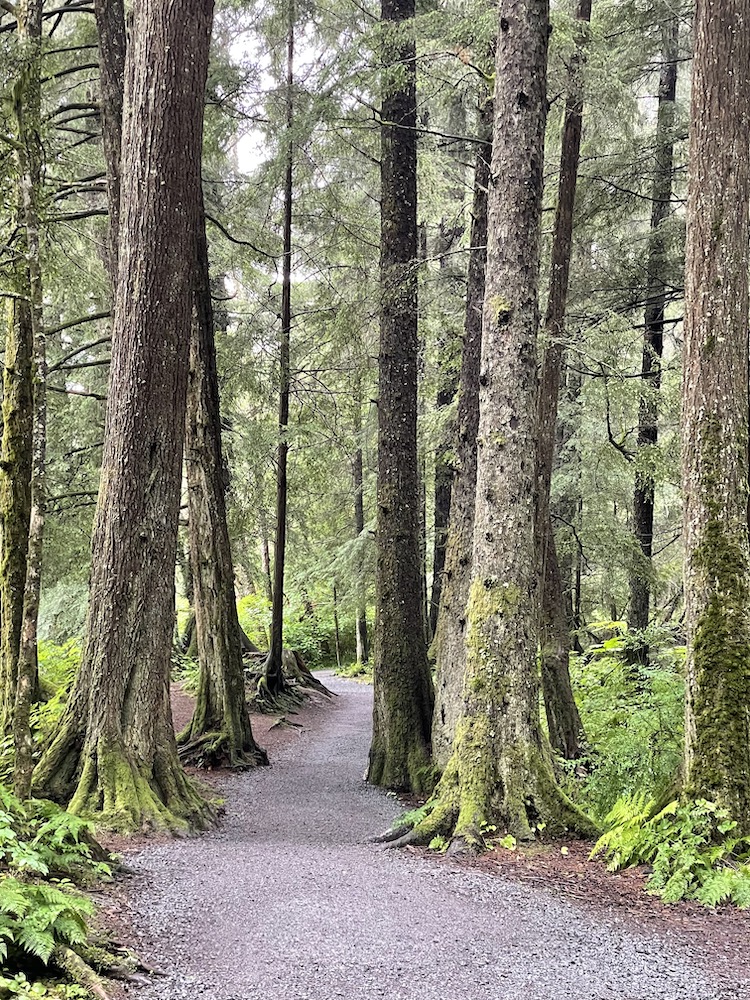
By Nathan Lawrence,
Owner of the Good News Tree Service, Inc. in Wilsonville, OR since 1985 — ISA Certified Arborist • ISA Tree Risk Assessment Qualified • State of Oregon Licensed Commercial Pesticide Applicator • OSU Master Gardener
The following information and recommendations pertain to the northern Willamette Valley areas of western Oregon.
Planting the right tree in the right location will help to minimize plant stress (both biotic and abiotic), pests and mortality, thus ensuring better tree performance for years to come. This is a wise use of resources, economical, good for the well-being of the community and for the local environment and the earth in general. This also means that fewer chemical pesticides will be required in caring for the tree, which is a good thing for everyone and everything.
To accomplish these goals requires intentional planning and tree planting strategies. Prevention is the best medicine! Property owners cannot afford to pay someone simply dig a hole and drop a tree in it, and then walk away after the tree planter has collected their money and moved on. Garbage in garbage out! If the tree was not planted with intentional forethought with an eye on long term tree survival, it is likely the tree will under-perform, require expensive (often chemical) treatments and may even die. If the tree is planted with strategic and intentional forethought, and then properly cared for subsequently, it will be more likely to perform healthily for generations to come
The following are some things to consider before planting a tree on a site.
Site Evaluation
It is essential to determine the soil volume of the planting area, so that the appropriate tree can be chosen for that specific site. The smaller the soil volume, the smaller the tree (at mature size) that can be planted in that area. Conversely, the larger the soil volume, the larger the tree (at mature size) that can be planted. I recommend that the tree size–soil volume ratio be based on various studies of a tree’s soil requirement at its mature size. If a tree doesn’t have the proper soil volume, its roots will not be able to uptake the amount of soil moisture and nutrients they need to be healthy, nor will they be able to anchor themselves sufficiently against wind storms.
Here is a list from based on the above mentioned soil volume study for urban trees of approximate tree size and suggested soil volume requirements. These numbers are based on the tree’s crown spread and diameter at breast height (or dbh) at the tree’s mature size. (One online calculator for determining the soil volume needed for a tree can be found at https://greenblue.com/gb/resources/soil-calculator/.)
- 14 foot crown spread by 4 inches dbh needs 100 to 307 cubic feet of soil volume.
- 21 foot crown spread by 8 inches dbh needs 200 to 698 cubic feet of soil volume.
- 27 foot crown spread by 12 inches dbh needs 300 to 1144 cubic feet of soil volume.
- 32 foot crown spread by 16 inches dbh: needs 1000 to 1607 cubic feet of soil volume.
- 36 foot crown spread by 20 inches dbh needs 1300 to 2034 cubic feet of soil volume.
- 39 foot crown spread by 24 inches dbh needs 1400 to 2512 cubic feet of soil volume.
To determine the average soil volume of a street tree planting strip, first measure the width of the strip (from sidewalk to street curb), then the average depth of the soil (two feet or less), then the length of strip. For example,
- If the tree’s roots spread to a radius from the trunk of 10 feet with 2 feet of soil depth in a 5.5 foot wide planting strip, then the soil volume in that area is 220 square feet.
- If the tree’s roots spread to a radius from the trunk of 20 feet with 2 feet of soil depth in a 5.5 foot wide planting strip, then the soil volume increase to 440 square feet.
- If the planting strip is 8 feet wide and the tree’s roots spread to a radius from the trunk of 10 feet with 2 feet of soil depth, then our soil volume is 320 square feet.
- If the planting strip is 8 feet wide and the tree’s roots spread to a radius from the trunk of 20 feet with 2 feet of soil depth, then our soil volume increase to 640 square feet.
Another way of determining the soil volume is to calculate the soil volume based on the size of tree’s canopy. One to three cubic feet of soil is needed for every square foot of crown projection. This is the anticipated area under the drip line of the tree at expected maturity. This formula does not apply to fastigiate and columnar habit trees. The soil volume requirement can be calculated for narrow form trees by basing the canopy diameter on the parent tree’s natural growth form.
The volumes generated in the above lists is an estimate and should only be used to generate an order of magnitude as a guide or target volume. Furthermore, there is a wide range of soil volumes recommended by soil scientists, botanists and landscape architects. The bottom line? The smaller the tree the better for most street tree situation, since recommended soil volumes are seldom high enough to support healthy trees long term.
Please note that if the soil is only 18 inches deep, then the soil volume will be even less. In many cases in planting strips along roads and sidewalks, it is not uncommon to hit compacted, impermeable gravel in various spots in the tree’s root zone at only a depth of 6 to 12 inches.
In light of the reality that street trees are seldom planted with the optimal soil volume and soil fertility they would prefer, the manager of the street tree will need to monitor the tree to ensure that it has the proper nutrients needed to sustain maximum tree performance. A planting site that sub par to the tree’s optimal needs may necessitate occasionally feeding the tree if it begins to show signs of stress. This needs to be factored into the long term care of street trees.
Soil Type, Texture and Structure
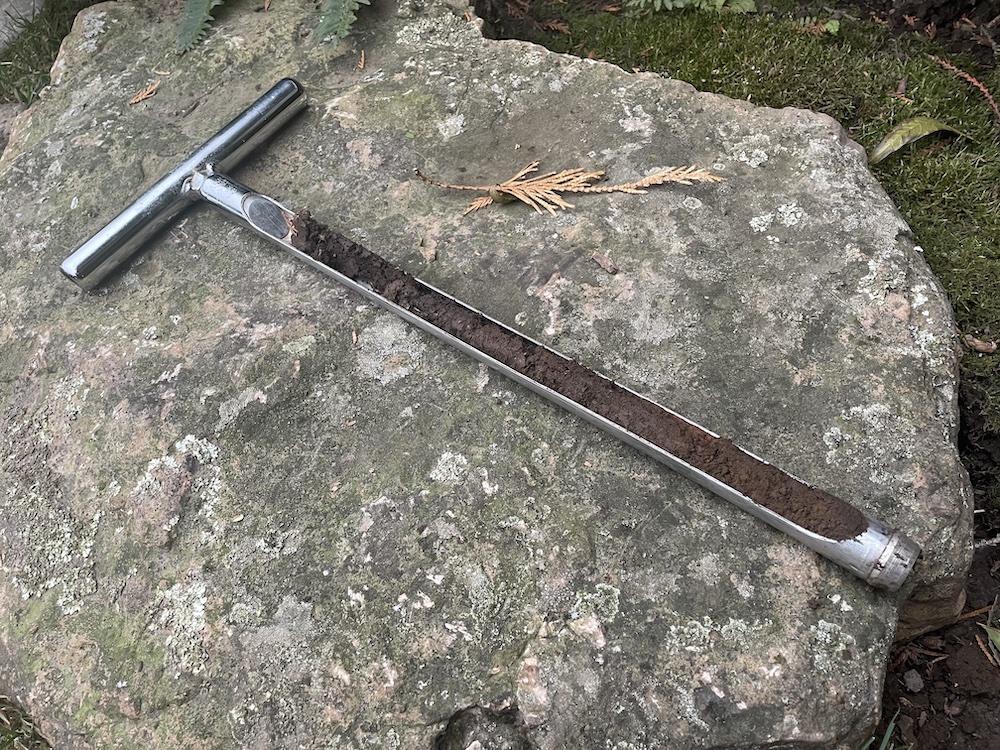
Next, we must conduct a soil test to 12 inches deep to determine soil type, texture and structure, so that the right tree is planted in the soil type that it prefers. This involves determining the approximate proportion of sand, clay, silt (and loam, which is a combination of the previous three soil types).
Continue readingExamples Bad (&%$#!) Pruning!
P—leeeaze don’t ever hire someone to “prune” your trees, no matter how good the price, if they do the kind of work shown in the following pictures!
I took these photos in neighborhoods where we have been the dominant tree care provider for decades, but to save a little money, the trees’ owners hired either El Cheapo Tree Service or FlyByNight & TakeUr$and Run Tree Service to “prune” their trees, and look what they got!
Sadly, these trees are not only painful to look at, but this can also harm the trees, devalue the property and engender the scorn and ridicule of knowledgeable and discerning neighbors.
The ISA Certified Arborists of Good News Tree Service, Inc. of Wilsonville WILL NEVER put their name on this kind of tree butchering! NEVER! EVER!
And what’s even sadder, is that the property owner probably thinks that this looks good. Ugh! (I wonder what their spouse thought of it, when they came home from work? I wouldn’t have wanted to be in the house when that happened! I can just imagine pots, books and end tables flying through the windows…)

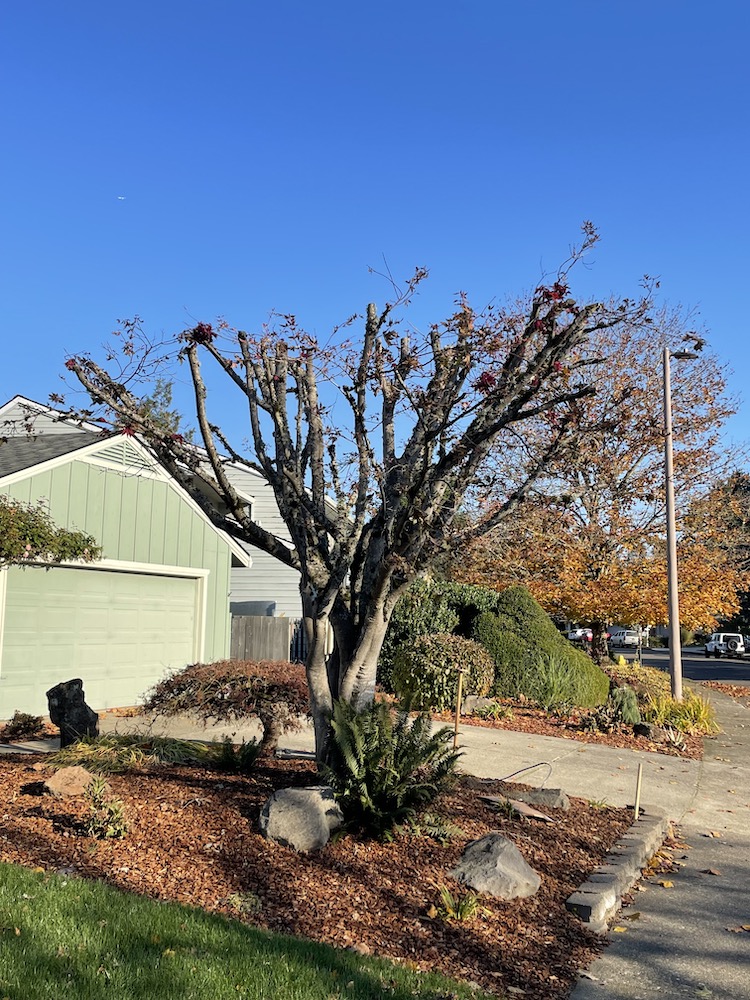
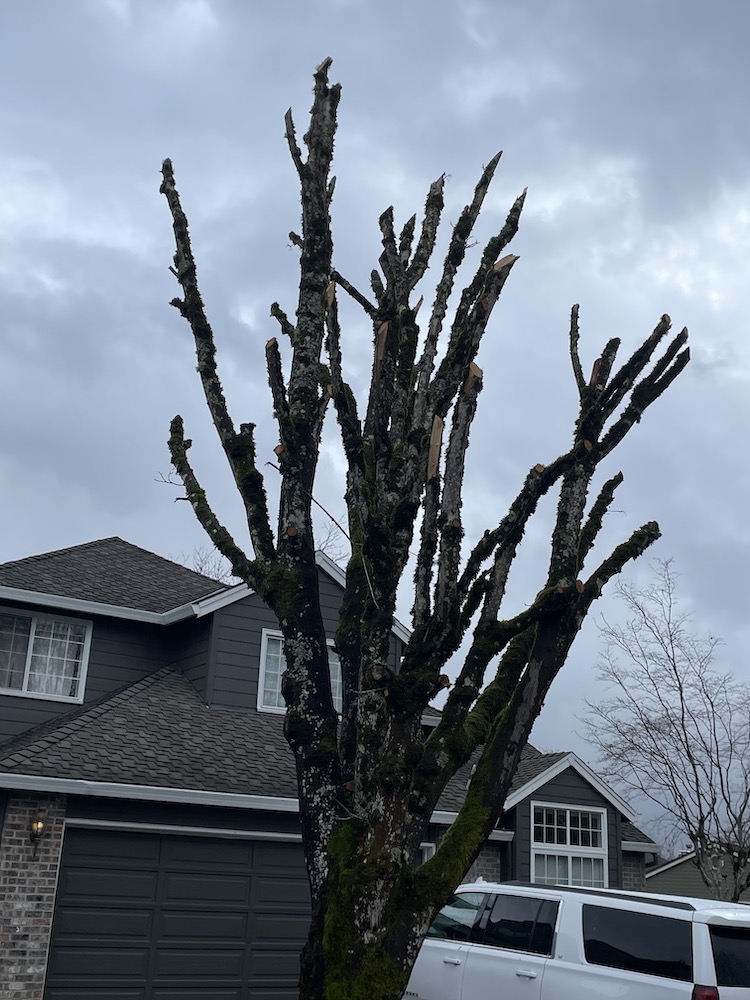
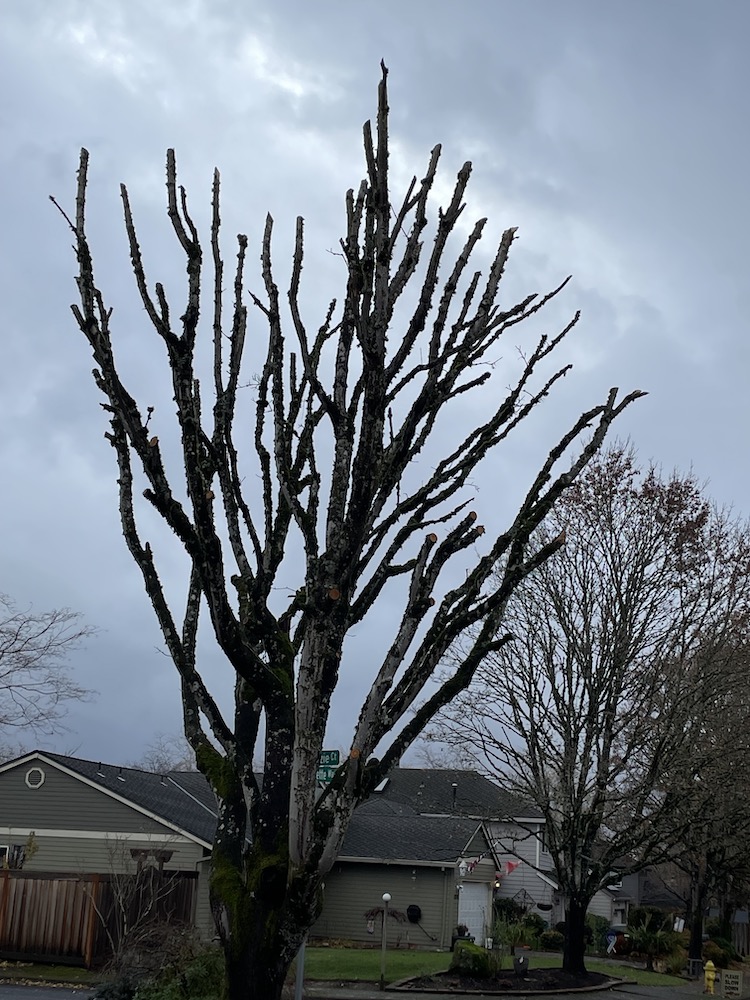
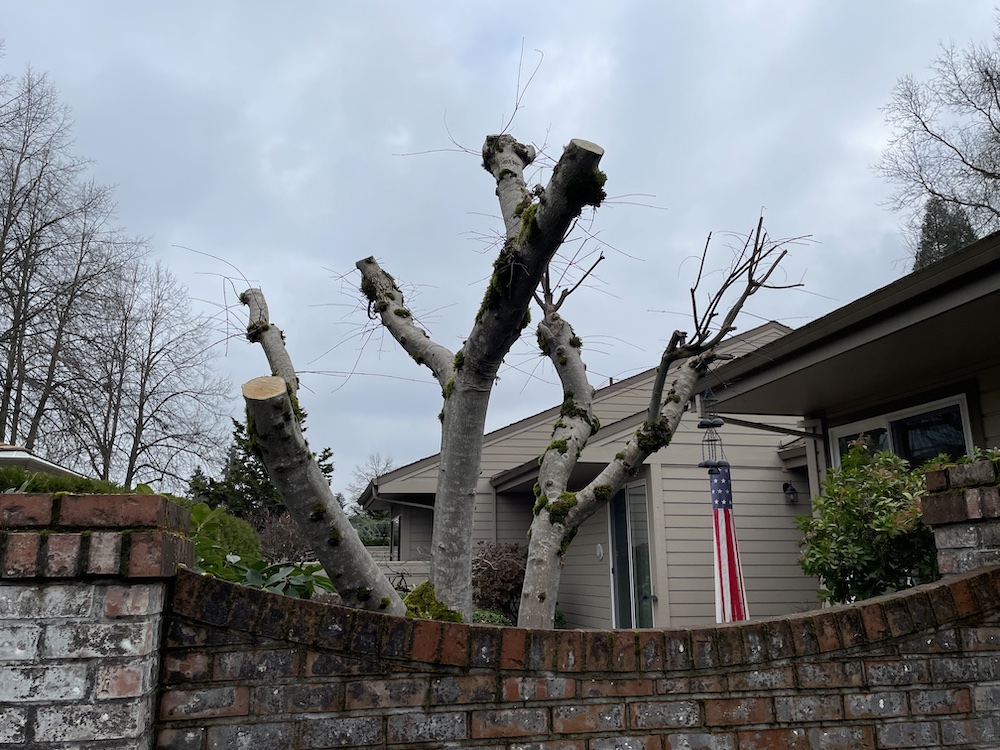
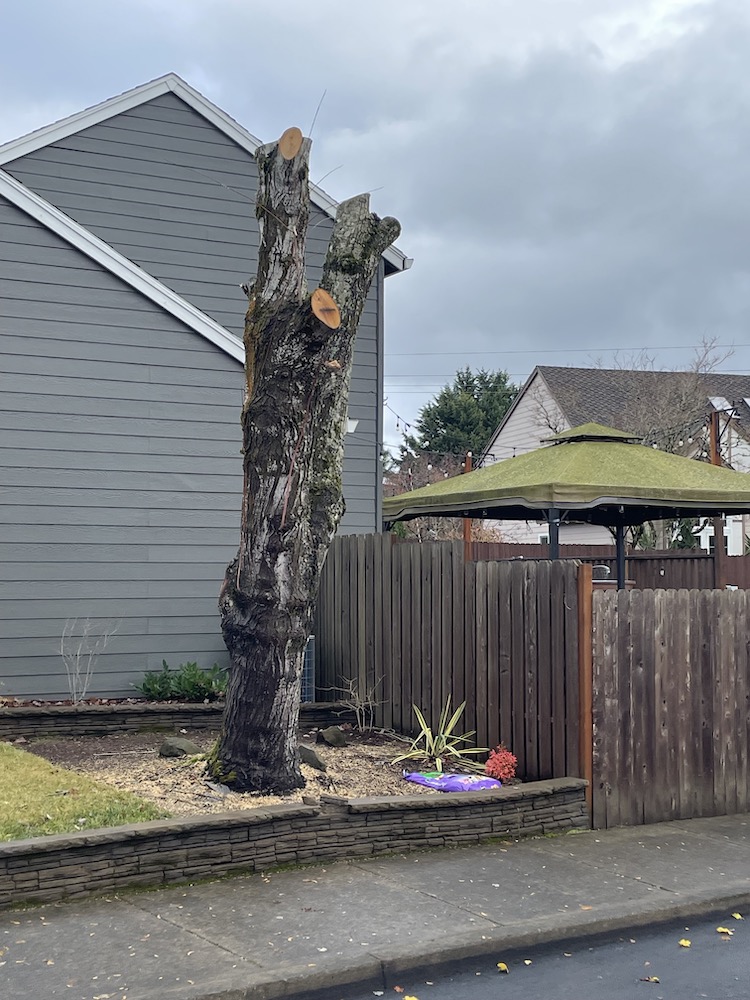
There’s a saying among professional arborists: “Don’t call bad tree pruners tree butcherers. Butchers are highly trained professionals!”
December in the Garden—A To Do List
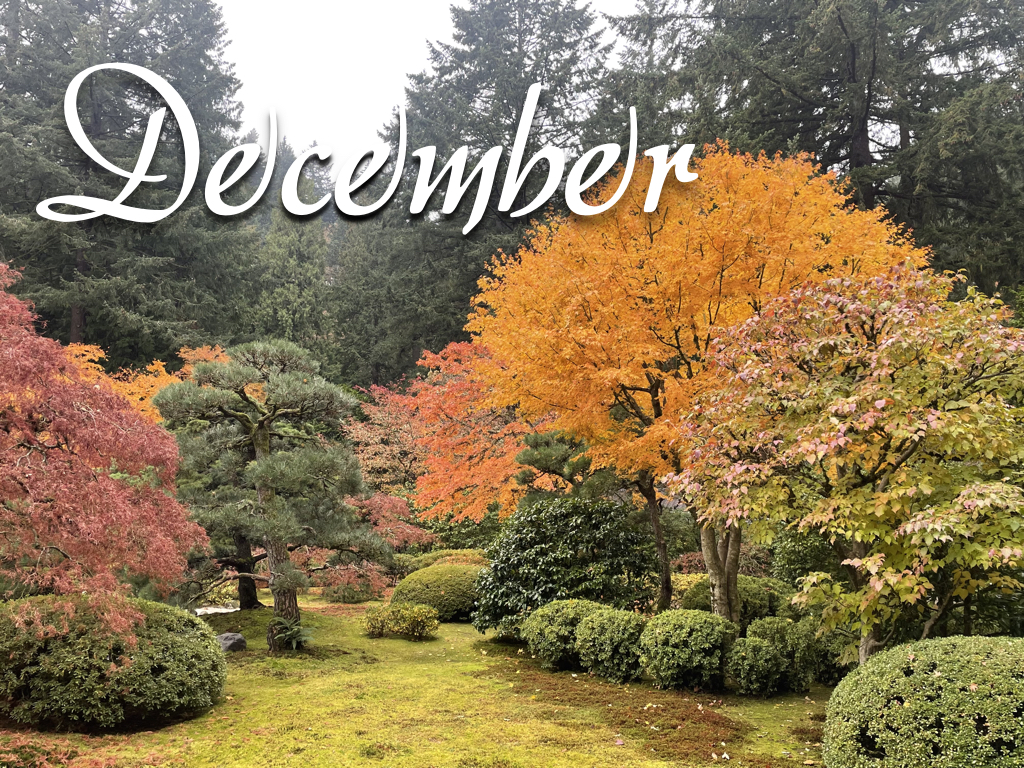
This guide is tailored for the western valleys of Oregon and Washington.
YOU can help to make the world a better, a more friendly, loving and beautiful place by being a good steward of the spot on this earth that you are privileged to be borrowing for a time—your garden. Nathan, the Treevangelist, urges you to treat your spot on this planet like your own personal Garden of Eden paradise. Then notice the joy that it will bring to you! This is your divinely mandated responsibility. Your trees, shrubs, flowers and the wildlife in your yard will express their smiling appreciation back to you and to others as they radiate love, joy and beauty bursting forth with vibrant and verdant life. Below is a to do list to help you to do just that.
It’s December-r-r-r! Doesn’t it seem like summer’s scorching heat just ended? Well it kind of did. The hot temps just ended in late October and the rainy season started on Friday, October 21 in the northern part of the Willamette Valley. We had approximately two weeks of fall, and then it seems like winter started! As of this writing (the second day of December), I have emptied about 14 inches water out of my rain gauge since October 21—about four more inches than last year. Yes, this autumn has been full of contrasting extremes. Hot, summer-like weather for the first month, then a quick transition to the fall rains. After about two weeks of mild weather, the temps began to plummet. We’ve already hit 22˚ on my home thermometer plus numerous days below freezing already. Through the seasonal grayness, the resplendency of the fall leaf colors have beamed through in unparalleled extravagance. Now snow has even begun to fall at the lowest levels. Timberline Lodge on Mount Hood (6,000 foot elevation) already has a base snow depth of five feet—much higher than the past few years for this time. Yesterday, a few snow flurries occurred gently gracing the valley floor in my area with more predicted to fall in the next few day. So why all the weather talk? Because weather and climate change affect the plants in your garden. Drought and heat have been the major headlines for the past few years, and the plants are struggling as a result. Many trees are dying. The wetter, cooler weather is a huge reprieve for our tall leafy friends. Plus it will help to kill some of the garden’s injurious plant pests. Will it continue? Who knows. But whatever happens, we will learn to adapt and to care for our gardens accordingly despite the vicissitudes of the weather, and this monthly garden column will be here to help you through it all. So stay tuned…
While you’re at it, take a few moments and scroll back through this same Good News Tree Service, Inc. blog and check out the archives for any tree and plant care articles that you may have missed. Also check out our YouTube channel at https://www.youtube.com/channel/UCvcu2lL9NpgoXQtUFYyQShw, our Facebook page at https://www.facebook.com/GoodNewsTreeService/ and our main website at https://goodnewstree.com. Please enjoy!
Readers’ suggestions on how to improve this list are gladly solicited. If you, the reader, have any suggestions for additions to this month’s list, please put them in the comments section of this article, and I will add them to the list. Thank you in advance! — Nathan
Tree and Shrub Care
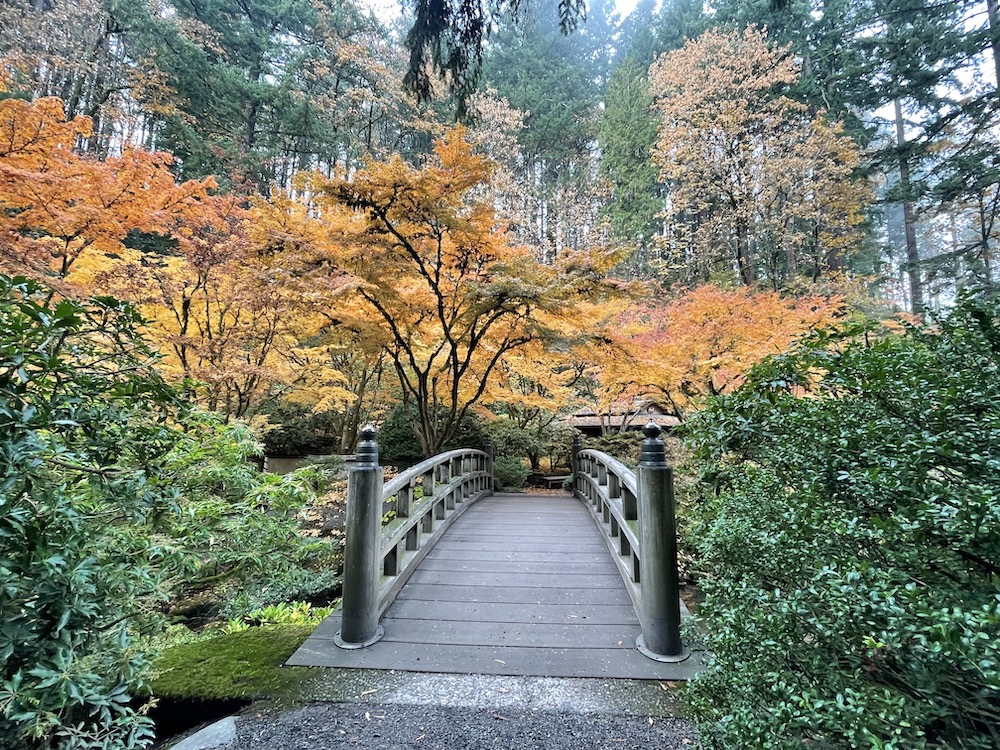
Fruit tree sanitation. To prevent possible spread of leaf diseases, rake up and remove leaves from around the base of fruit trees.
- Fruit tree pruning. After the leaves drop is an excellent time to prune trees that are done fruiting and for aesthetics, since wounds will heal more quickly in warmer weather than occurs in winter. This is also a good time to reduce the height of overgrown fruit trees, since they are likely to produce fewer water sprouts now then when pruned in the spring.
- Trees—winter storm issues. With the advent of winter storms and the potential damage that they may inflict upon your trees, have an ISA Certified Arborist with an ISA Tree Risk Assessment Qualification (like Good News Tree Service, Inc.) inspect your large trees for the potential of failure due to weak root systems and defects in trunks and branches. This can be done anytime of the year, but now, before the winter storms hit, is an excellent time to proactive assess the condition of your trees for potential limb and trunk breakage.
After each major weather event, check your trees for damage such as broken or hanging limbs. If you have concerns or questions about your trees, have an ISA Certified Arborist with an ISA Tree Risk Assessment Qualification (like Good News Tree Service, Inc.) inspect your large trees for damage or the potential of failure due to weak root systems and defects in trunks and branches.
- Plant or transplant trees and shrubs. After the cold, seasonal rains have started is a good time to plant or transplant ornamental trees and shrubs. Cooler weather means less transplant shock to the plants, and over the winter and spring, they will have time to begin to acclimate to their new environment before the stress of the next summer season occurs.
- Prune your trees and shrubs. This is a good time to start pruning your deciduous trees and shrubs after the leaves have fallen and a tree’s branching structure is clearly visible making pruning easier. If you’re not sure what to do, or how to do it, call Good News Tree Service, Inc. for a consultation, pruning lessons or to have them to the pruning for you.
- Pine. Prune coast/shore pines (Pinus contorta) and Scotch/Scots pines (Pinus sylvestris). These two pines are especially susceptible to the sequoia pitch moth whose larvae burrow into the tree trunks during the growing season (April through September) causing the trees to exude large amounts of unsightly pitch globules. While this seldom kills the tree, the bleeding of sap is not good for the overall health and vigor of the tree. It is advisable, therefore, not to prune these pine trees during the growing season, since the pruning cuts attract the moth, which then lays eggs on the tree, which hatch into tree-burrowing larvae. Pruning should be done on your pines from November to March.
- Mulch trees and shrubs. Apply two to three inches of mulch around all trees and ornamental shrubs. This helps to fertilize the plants and feed the soil, and also protects them against weed growth and loss of water when the warmer weather returns, and helps to insulate the roots against cold weather in the winter.
- Water your plants. Are you serious? In the winter time? Yes. Because of climate change, rain is not falling as regularly and frequently as it used to. For the past few years during the winter months, it is not uncommon to go several weeks with little or no rain. This means that shrubs or trees planted earlier in the season may need a drink of water from time to time during these dry times. This is because their roots aren’t established yet and therefore don’t have the water uptake capabilities that established plants have. The symptom of lack of water, as usual, is drooping and wilting leaves.
Elsewhere in the Garden

- Slugs. Put slug bait around winter flowers.
- Bulbs. Plant spring flowering bulbs.
- Leaves. Rake and dispose of ornamental tree leaves, or better yet, compost them and then spread the decomposed leaves back onto your shrub beds as a mulch next year.
- Mulch. Put a two to three inches of mulch (e.g. bark dust, garden compost or wood chips) around perennials and other plants that might be sensitive to subfreezing weather. Also, spread a fresh layer of mulch (e.g. bark dust, garden compost or wood chips) on all the bare dirt areas in your yard to prevent soil compaction from rains, to prevent weed growth and to enrich and help to condition your heavy clay soils. Adding a layer of mulch (several inches thick) over any tender perennial flowers, especially if the weather turns extremely cold and the ground freezes, will prevent death of flowers like dahlias.
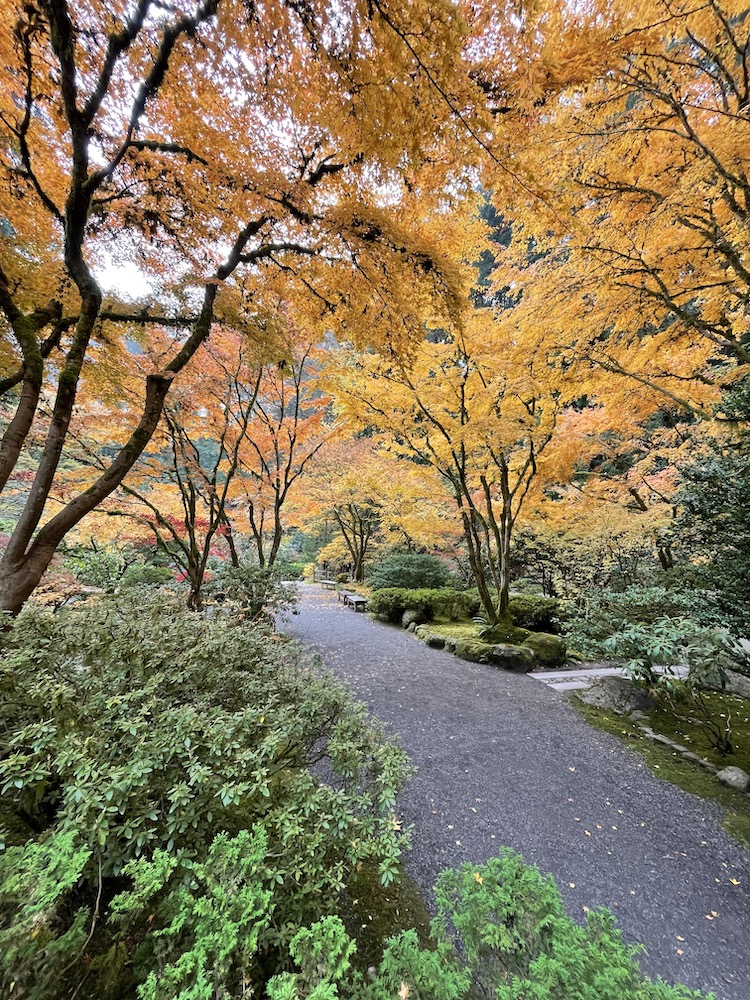
Every time of the year is the best time to visit the Portland Japanese Garden. My recent trip there didn’t disappoint!
- Irrigation system. Provide winter protection to in-ground irrigation systems by draining them and insulating valve mechanisms.
- Outdoor faucets. Protect outside faucets from subfreezing temperatures, and drain and store garden hoses in your garage or garden shed.
- Ivy. Cut English ivy off of the base of trees. (This can be done any time of the year.)
- Birds. Dutifully maintain your bird feeders. As winter comes, birds have a harder time finding food. This includes both seed and suet feeders. During dry spells, keep your bird bath watering hold full of fresh water. Caring for the local wild birds brings life and excitement to your backyard by turning it into a bird-friendly sanctuary. The birds will thank you for your generosity by providing you with hours of entertainment, and by eating insect pests that harm your ornamental trees and shrubs. Remember to feed your local humming birds that overwinter in our region. If possible, fill your humming bird feeders with a syrup that contains only 100 percent sugar (e.g., sucrose or dextrose) minus any artificial sweeteners, red dyes and other chemicals. Your birds will be healthier for it. You can find excellent bird care products and advice from knowledgeable and caring professionals at your local Backyard Bird Shop.
Rose Care
- Pruning. Prune your roses down by about one-third and remove any dead flowers and dead or diseased canes.
- Mulch. Heavily mulch your roses. Organic mulch (such as wood chips, rotted compost, rotted manure) is the best. While barkdust helps to hold moisture in the soil, it contains little or no nutrients, so it doesn’t feed the soil and thus won’t feed your roses.
- For more information on the care of roses, go to the Portland Rose Society website at https://www.portlandrosesociety.org/all_about_roses.html.
Lawn Care
- Fertilization. Apply winter fertilizer if you forgot to fertilize your lawn the fall.
- Rake leaves. What more can be said about this?
- Lawn mower. Perform mower maintenance. This is a good time to take your mower to repair shop for some annual engine maintenance and blade sharpening. Do it in the winter when the repair shops are not busy and to avoid the spring rush so that you will be ready to mow your grass in the spring.
- Caution. Avoid walking on extremely soggy or heavily frost-covered lawns to avoid damage to your grass.


